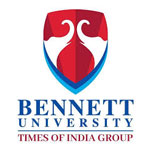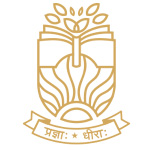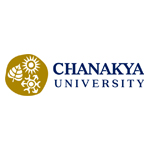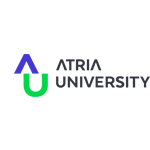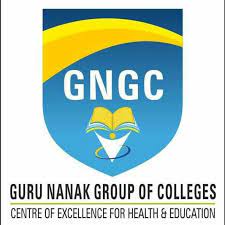Rural education: When digital innovation becomes hindrance to schooling
Alongside the mega battle over Aadhaar, a smaller skirmish is taking place in grassroots government institutions in rural India over the use of digital technology. Here, the impact of technology is unexpected, because the context in which it is introduced shapes the outcomes. The image that technology invokes — of enhancing productivity and reducing drudgery, besides increasing transparency in government departments by allowing access to information and making them more responsive to citizens — can be turned upside down in some contexts.
A study of five primary schools in a rural tribal block of central India illustrates the dynamics of the introduction of digital technology in under-resourced and understaffed institutions. These schools taught children up to the fifth standard, but had only 2-3 teachers each. So, a teacher handled 2-3 classes simultaneously, which naturally limited the actual teaching time. Since “multi-grade teaching” impacted quality, it also led to irregular school attendance by children, further worsening learning outcomes. The teachers having to follow centrally prescribed textbooks and timetables — with milestones set to ‘complete’ the syllabus portions, irrespective of how much the students had learned — did not make things better.
If that were not all, the teachers had to perform a host of administrative tasks. Some of them related to the school. These included maintaining records (in one school, the registers numbered 19), providing extensive information to the authorities (an example: children’s enrolment and attendance in the school for the past 10 years), and attending 4-5 meetings every month. There were also tasks relating to election duty, census enumeration and implementation of government programmes, clearly having no connection to the school.
The teachers’ commitment varied widely. There was one school, where the two teachers encouraged children to read, taught creatively, and yet did numerous administrative tasks after school hours, sometimes working late at night and even on holidays. The children, too, were regular, enthusiastic about learning and did their homework. Parents appreciated the two teachers. A contrast was provided by a couple of other teachers who came in late, chatted on phone during the class, shut children up when disturbed, and resorted to corporal punishment. Most teachers lay in-between: They taught as much as they could, while managing administrative work and multi-grade teaching. Their pedagogy was overall unimaginative, relying a great deal on copying from the book.
The incentive structure in the school system, unfortunately, did not distinguish among teachers for their commitment levels and teaching talents or recognise those who excelled in difficult circumstances. The supervisors punished errant teachers at times, but also reported frequent requests from politicians for withdrawing such actions. When asked how they motivated teachers, the managers invariably talked about disciplining them, while seemingly unaware of more positive approaches. When the trainers were asked to define a “good teacher”, they referred to punctuality, finishing the syllabus in time, etc. Issues of how children learn best or what motivates teachers, deliberated intensively in the world’s best school systems, were simply not part of their lexicon.
The schools were housed in modest 2-4 room buildings. While the teachers had chairs, the children sat on the floor. The schools had no computers. The Gram Panchayat computer was used to feed data. Digital technology had, however, impacted the schools, as the students’ Aadhaar-linked IDs had to be created so as to deposit government scholarships and subsidy on uniforms into their bank accounts. Many students lacked the basic documents. The teachers had to help them get Aadhaar cards and caste certificates, and also open bank accounts. The local bank branches were 5-20 km away. The teachers and students had to make frequent visits, as the banks’ IT systems often developed software problems. Even after that, some students remained without bank accounts, missing out on their entitlements. Moreover, as the subsidy for school uniforms was transferred into the accounts — earlier, the uniforms themselves, not money, was distributed to students — many parents often used it for other needs.
Managers, too, used the new technologies. Teachers were required now to mark their attendance on a mobile app that tracked their location. A WhatsApp group of teachers had been created, which allowed messages to be sent quickly and could also call them for meetings or demand information at very short notice. The teachers had to keep their mobiles on and the supervisor would call if they missed a message or did not reply. Teachers reported getting such messages while in class, forcing them to immediately drop teaching and rush to the meetings. The supervisors, under pressure themselves, prioritised data collection over teaching. Not surprisingly, the most committed teacher had the greatest problem with technology. He disliked using the mobile phone in school and was frequently berated for missing messages.
In these rural schools, technology clearly had exacerbated the key problem of the school system — of too little actual teaching time. In an already over-centralised system, technology had also ended up centralising more, as orders were communicated faster and monitoring became more intense. It had, moreover, tilted the balance further away from teaching, by increasing the routine administrative work of teachers. Technology, in other words, was hindering, rather than helping, the primary job of teaching.
The point here is not that our rural schools should not use modern-day technologies and benefit from their potential efficiencies. However, the context in which technology is introduced needs recognition. Our government school system today is still quite primitive. Schools are short of teachers, furniture and, yes, computers that students can actually use. Even motivated and skilled teachers find it difficult to spend time with students, while very few people within the system engage with the processes of teaching and learning. As a result, “innovations” are often gimmicks rather than well-thought-out strategies. And our school management practices are archaic. There is pointless centralisation and reliance on punishment as a motivating tool, usually nullified by political patronage.
The technology-as-panacea approach takes attention away from the core problems of our rural school system. Technology creates a mirage of “efficiency” while becoming a smoke-screen to hide the sorry state of grassroots public institutions and the need to strengthen them by focusing on their basic inadequacies.
The writer is a former IAS officer. The study quoted has been supported by PRADAN, a New Delhi-based rural development organisation
News Source (Indian Express)
Want help with admissions?
Leave us your details and we will contact youApplications for Admissions are open



